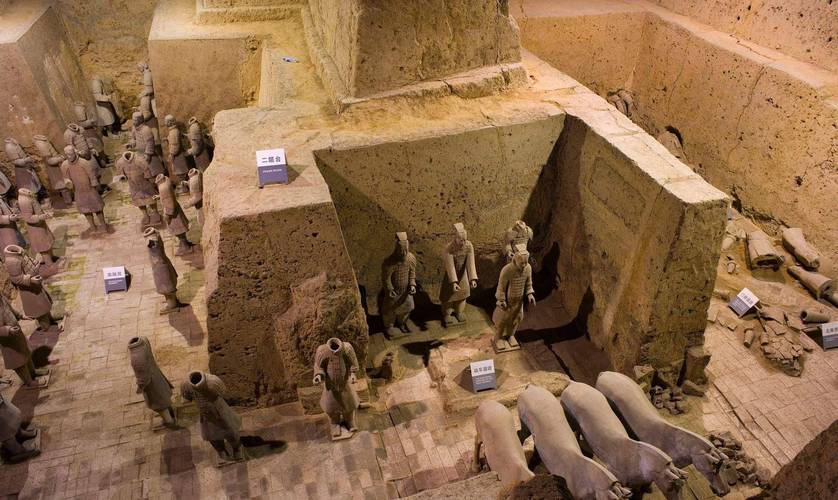
Will They Ever Open the Tomb of Qin Shi Huang?
Archaeologists are terrified to open the tomb of Qin Shi Huang, China's first emperor who has been buried for 2,200 years. The elaborate mausoleum, discovered in 1974, holds untold treasures and secrets. However, a combination of historical, ethical, and technical challenges makes the prospect of excavation a daunting and potentially disastrous one.
The Legacy of Qin Shi Huang
To understand the trepidation surrounding the tomb, it's crucial to understand the legacy of the man buried within. Qin Shi Huang (259-210 BCE) was a figure of immense historical importance. He unified the warring states of China, establishing the Qin dynasty and laying the foundation for the Chinese empire that would last for millennia. His reign saw the standardization of weights and measures, the implementation of a single writing system, and the construction of vast infrastructure projects, most notably the Great Wall. However, he was also known for his ruthlessness and the brutal methods he employed to consolidate his power.
A Glimpse into the Afterlife
The discovery of the Terracotta Army in 1974, just outside the emperor's burial mound, offered a breathtaking glimpse into the scale and grandeur of his final resting place. Thousands of life-sized terracotta soldiers, each unique in its features, stand guard over the emperor's tomb, a testament to his power and the importance placed on his afterlife. Historical accounts describe the tomb as a microcosm of his empire, complete with palaces, rivers of mercury, and a ceiling studded with pearls representing the celestial heavens.
The Challenges of Excavation
Despite the allure of the treasures and historical knowledge that might lie within, the challenges of excavating Qin Shi Huang's tomb are immense:
- Structural Integrity: The tomb itself is a complex and ancient structure. Any excavation attempt could lead to irreparable damage or even collapse, especially given the potential presence of booby traps mentioned in historical texts.
- Technological Limitations: While modern archaeology has advanced significantly, we still lack the technology to safely handle the unique challenges presented by this tomb. The potential presence of large amounts of liquid mercury, for example, poses a significant environmental and health hazard.
- Ethical Considerations: Many argue that disturbing the emperor's final resting place would be a disrespectful act. There's also the issue of ownership and potential exploitation of the cultural treasures within.
Preservation Over Excavation
Currently, the Chinese government prioritizes preservation over excavation. Extensive archaeological work continues around the tomb complex, utilizing non-invasive techniques like ground-penetrating radar and remote sensing to map the site and glean information without disturbing the tomb itself.
Conclusion
The question of whether or not Qin Shi Huang's tomb will ever be opened remains a subject of debate. While the desire to uncover the secrets and treasures buried within is immense, the risks and ethical considerations associated with such an undertaking are equally significant. For now, the secrets of China's first emperor remain safely entombed, leaving us to marvel at the scale and ambition of his final resting place.
FAQs
-
Q: What is the significance of mercury in Qin Shi Huang's tomb?
- A: Historical texts describe rivers of mercury flowing through the tomb, symbolizing the rivers of China and the emperor's eternal rule. Mercury was also believed to have magical properties that could grant immortality.
-
Q: What other treasures are believed to be inside the tomb?
- A: Historical accounts mention palaces filled with precious jewels, jade artifacts, rare books, and other artifacts representing the wealth and splendor of the Qin dynasty.
-
Q: What is being done to protect the tomb?
- A: The Chinese government has implemented strict preservation measures. The area surrounding the tomb is a UNESCO World Heritage site, and ongoing research and monitoring are conducted to ensure its long-term stability.
note: This return of all, without the author's permission, may not be reproduced